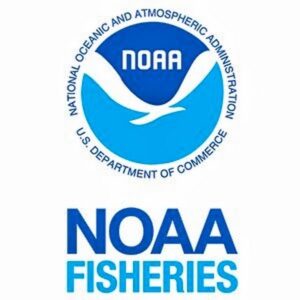
NOAA Fisheries’ Alaska Region strategic plan for 2022-2027 focuses on the most impactful ways the agency can refine its internal processes to leverage its people and apply financial resources to deliver better results, according to regional administrator Jon Kurland.
The document, which aligns with the U.S. Department of Commerce and National Oceanic and Atmospheric Administration plans for the same years, calls for open communications with staff, partners and stakeholders, and a transparent, priority-based approach to allocate and reallocate staff and discretionary budget over time.
The 10-page document, online at https://media.fisheries.noaa.gov/2022-09/akro-strategic-plan-2022.pdf, was released in early September. Its vision is that by 2027 the Alaska region will lead the nation in effective stewardship of living marine resources as the region adapts to future challenges.
It states that the Alaska region “will be the model for efficient delivery, exemplary service, empowerment of our people and operational excellence.”
Kurland succeeded Jim Balsiger as regional administrator for Alaska for NOAA Fisheries in March. Balsiger, who retired, served in the post for 21 years.
Kurland has been with the agency since 1990. He has served in two regional offices and headquarters, including three senior leadership roles in the Alaska region: assistant regional administrator for habitat conservation and acting deputy regional administrator.
Prior to his new role, he had served as assistant regional administrator for protected resources since 2012.
The strategic plan notes that Alaska produces more than half the seafood caught in U.S. waters, contributing over $7 billion to the national economy and supporting the nation’s food security.
Its marine mammals and habitats contribute to healthy ecosystems and support a robust tourism industry as well as vital subsistence uses by Alaska Natives, Kurland said.
NOAA Fisheries is entrusted with the sustainable management of these resources under the Magnuson-Stevens Fishery Conservation and Management Act, Endangered Species Act, Marine Mammal Protection Act and other laws.
“We fulfill that mission in close partnership with many other entities,” Kurland said.
He noted that Alaska is currently faced with unprecedented challenges in supporting fishing communities, traditional ways of life and ecosystems experiencing dramatic effects from climate change.
“Now more than ever we need to collaborate to sustain marine resources and adapt to meet the challenges ahead,” he said.
